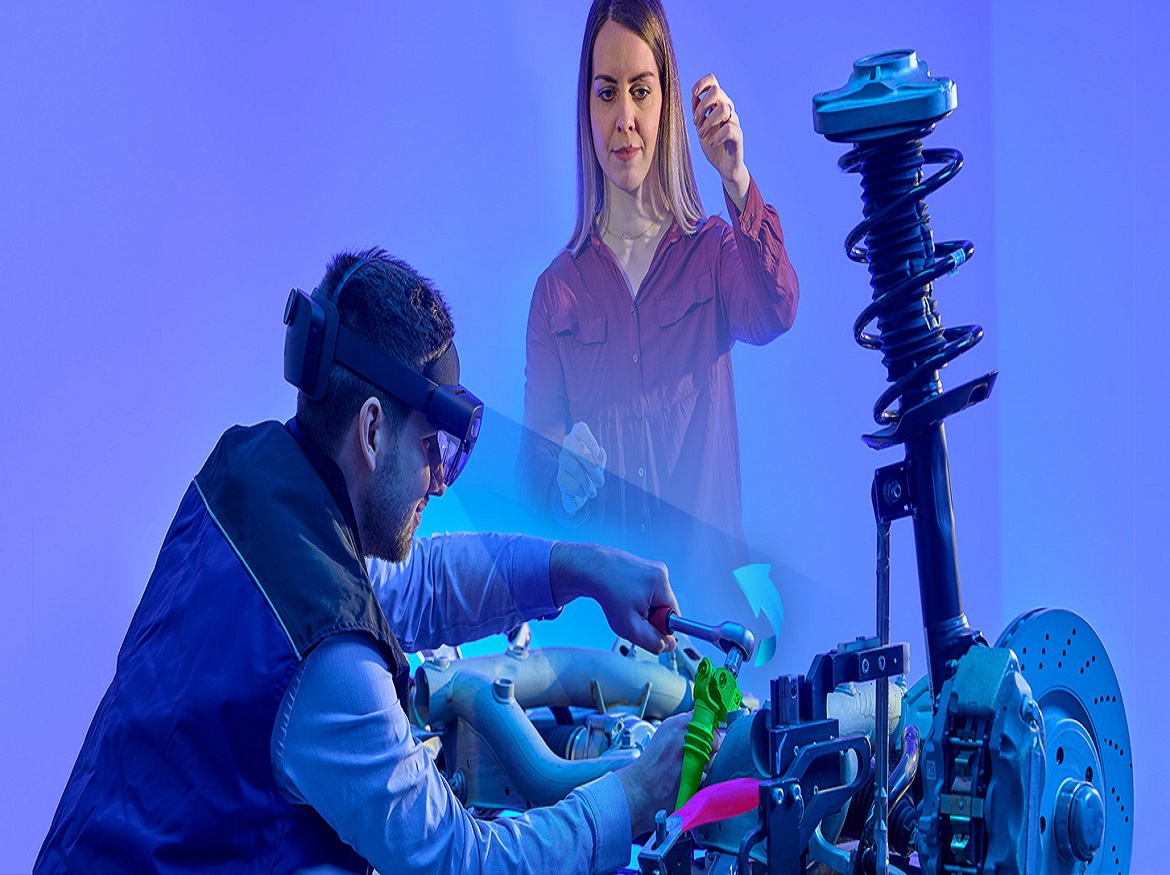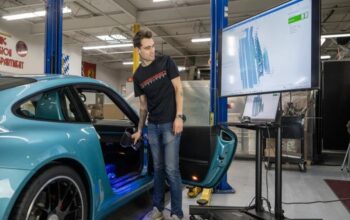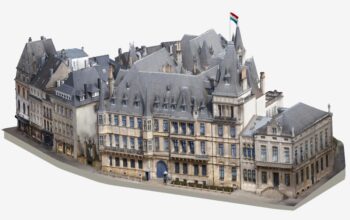Various industrial assembly lines exist. Others are characterized by complex processes and the requirement for strong coordination between frontline staff and backroom professionals, while some function with regular changes in product arrangement. Artificial intelligence (AI) and augmented reality (AR) have been merged by Fraunhofer IGD to assist users in overcoming the obstacles of contemporary industry. The answer comprises an AR-supported assembly workstation that directs workers through the assembly process while also enabling component quality control and remote support. Manufacturers can lower error rates and get rid of expensive downtimes in this way. Both at CONTROL and HANNOVER MESSE, the Fraunhofer team will demonstrate the software.
Darmstadt: Through augmented reality glasses, the worker can see the proper order and alignment of the components. This is not just a futuristic idea; it has already become a reality and has streamlined procedures on current production lines. Printed paper instructions are unnecessary with the AR-supported assembly workstation created by the Fraunhofer Institute for Computer Graphics Research (IGD). Instead, four cameras scan the workspace and use a portable AR output device, like a tablet or AR glasses, to walk human operators through each step.
Immediate feedback avoids errors
When a worker picks up the incorrect part, a visual error message with an overlay of the right part appears in their area of vision right away. Feedback is also given if a component meets the specifications but is installed wrongly or has a flaw, such a drill hole that is missing. Virtual and augmented reality department deputy head Andreas Franek explains: “The software prevents errors in the assembly process from occurring in the first place and from recurring in the future because if discrepancies are only discovered later, this incurs increased expense and causes cost-intensive downtimes.”
In the construction of plants and tools, quality assurance, and the automotive industry, this kind of support is already in high demand. The production of batteries and custom-designed control cabinets are two further potential applications. Another benefit of the software, particularly for complex product installations, is that if concerns or issues emerge, a specialist may be quickly called in from outside to assist the person working on the assembly line. The subject matter expert can provide explanations in real time via video chat and offer feedback directly on the workpiece itself. The expert can virtually present in the user’s experience space and work environment thanks to immersive AR technologies. As though both parties were physically present, this enables natural two-way communication and interaction. The “Industrial Metaverse”‘s primary application is this type of telepresence.
Teaching AI with CAD models
Franek and his colleagues used augmented reality and machine learning techniques to create the technology: “The AI is educated with computer-generated visuals produced from the CAD models. Real photographs are not necessary. This shortens the relevant lead time. Additionally, it does away with the intermediate work step from the meticulously planned printed work instructions to the CAD models, which continue to determine the order of assembly in many industrial settings.
Visitors to the trade show who are interested in this significant advance can use a machine tool to check out the AR-supported assembly workstation for themselves and follow the AI’s instructions. Additionally, customers can receive assistance through the remote guiding feature for extremely challenging assembly jobs.
Credits: Fraunhofer
Click on the following link, Metrologically Speaking to read more such news about the Metrology Industry.









